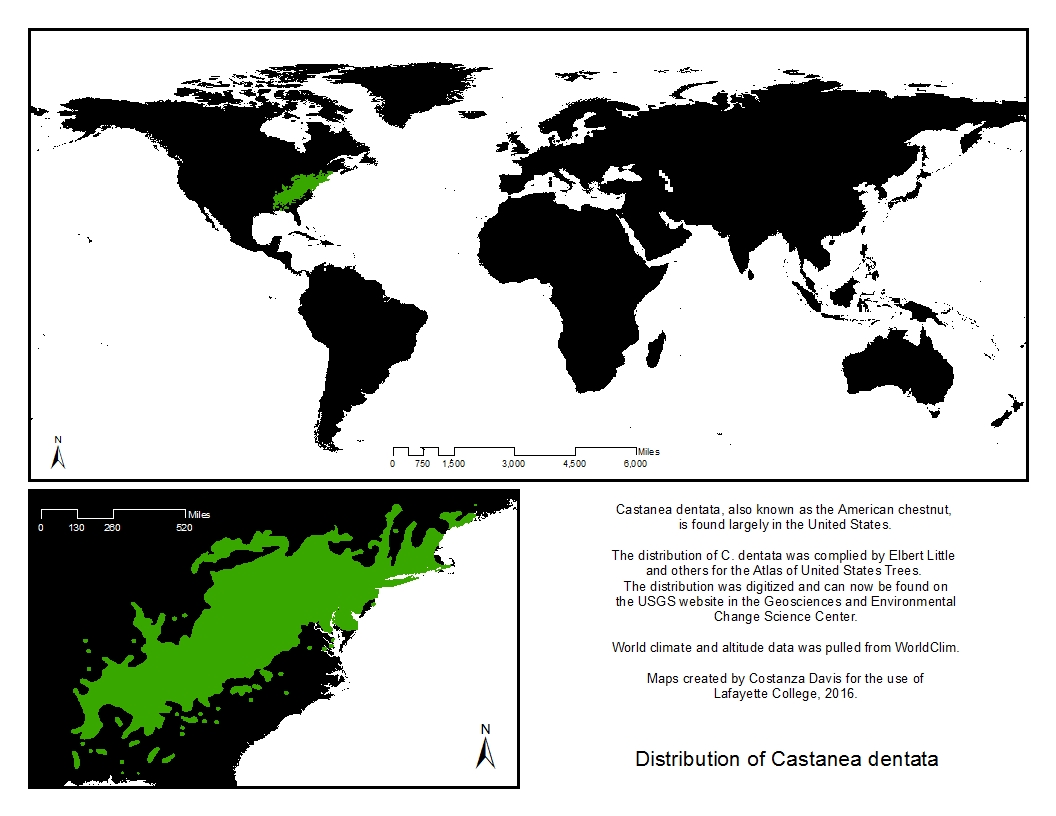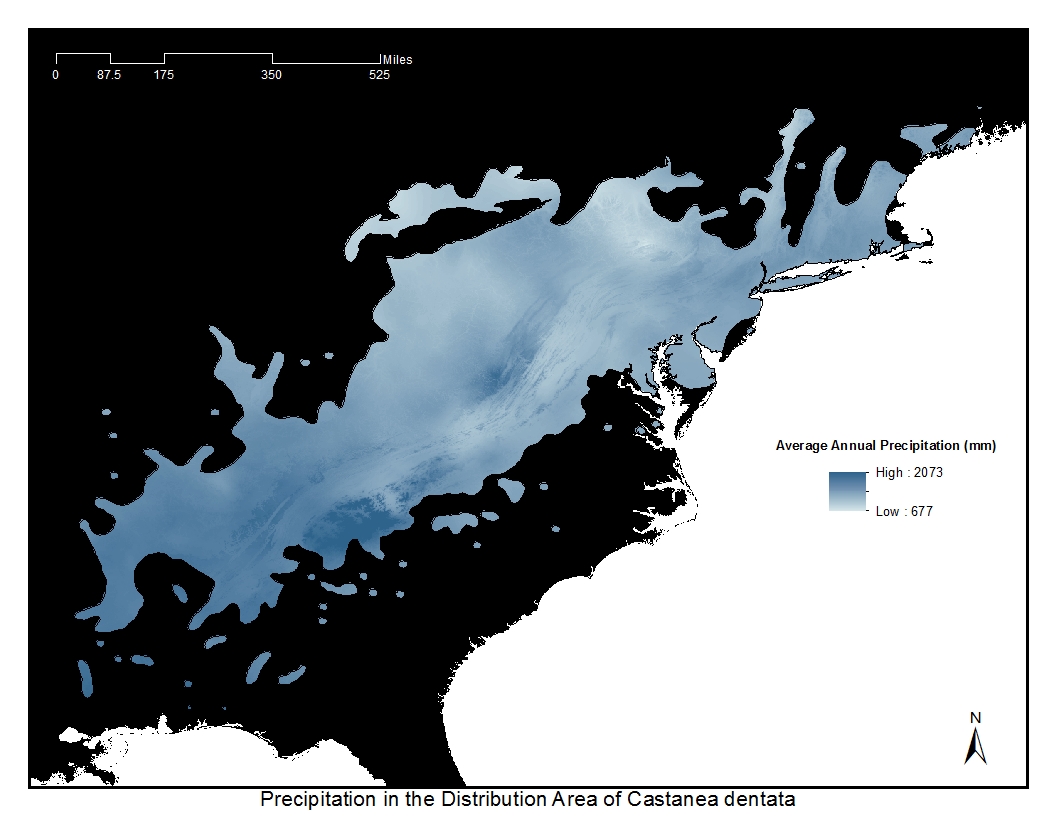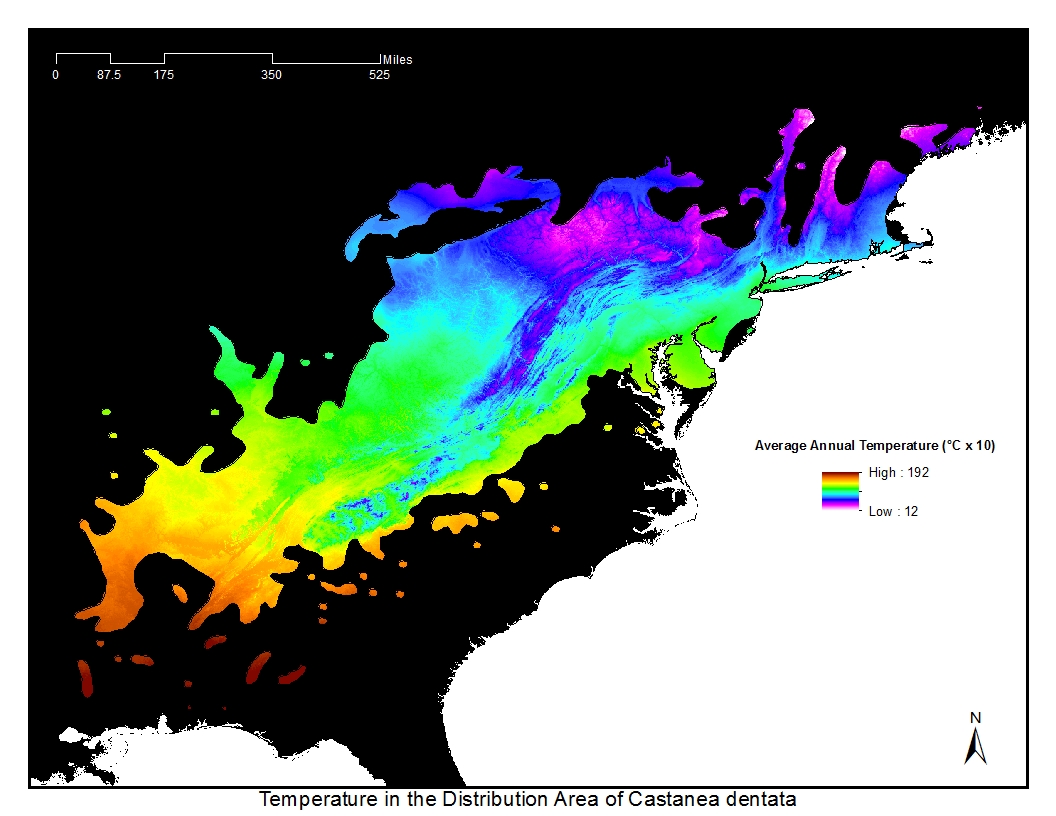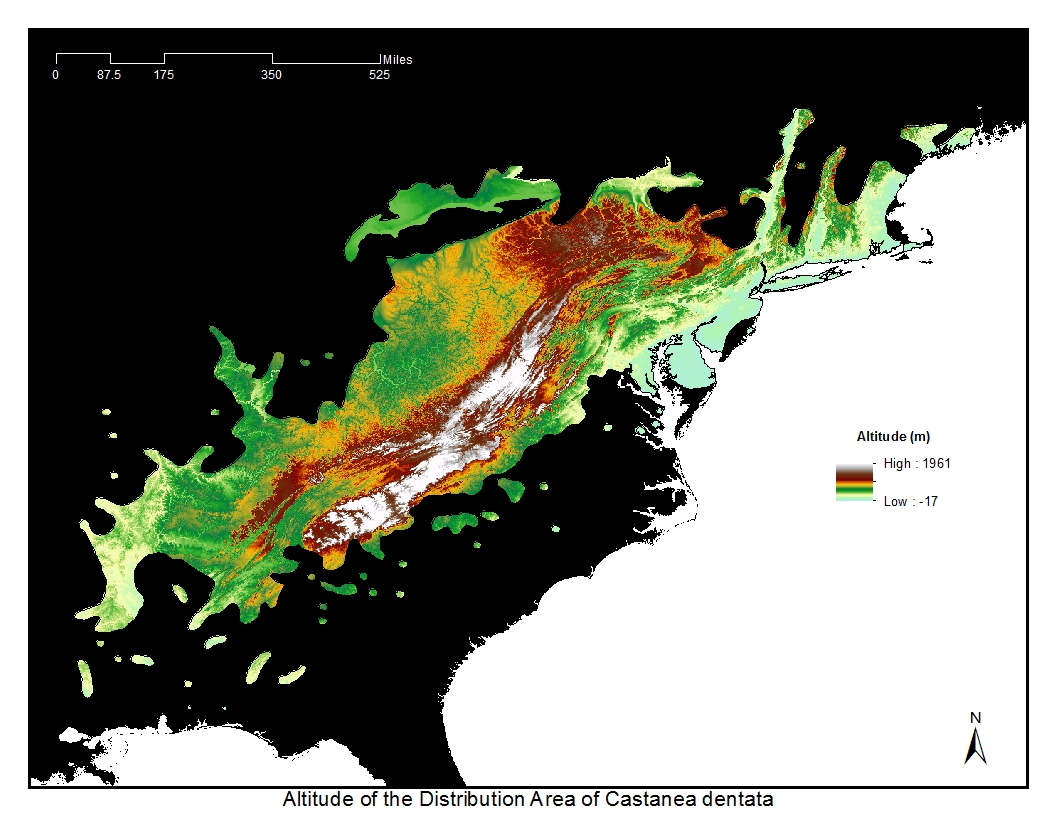The American chestnut, Castanea dentata, is a member of the beech family and is the only chestnut native to Canada. The American chestnut is also known simply as the chestnut or as the sweet chestnut.
The American chestnut is considered to be a large tree, reaching up to 100 feet in height.
The American chestnut is shade-tolerant, and indeed seedlings thrive best in the shade. In terms of soil, the American chestnut is found on acid to neutral sandy soil. The American chestnut does best with dry soils
Distinct male and female flowers are found on the same tree, making the tree monoecious. However, cross-pollination is required as it is self-incompatible. Flowers appear in late spring to early summer. Pollination requires insects. Nuts are produced in the fall and are dispersed by large birds and squirrels.
The dark grey-brown bark of the tree is smooth and thin, with fissures appearing with age. The smooth green leaves are alternate and simple, 6 to 12 inches long and 2 to 4 inches wide. The tip and base are tapered and the margins show widely spaced teeth.
Prior to the chestnut blight disease that spread in the early 1900s, the American chestnut dominated many forests of North America, and was considered one of if not the most important deciduous forest tree of eastern North America. However, the disease greatly reduced the overall population. In the United States, it is considered extirpated, critically imperiled, imperiled, or vulnerable in numerous states.
In addition to the birds and squirrels that eat the chestnuts, humans and livestock also eat the nuts. Chestnuts are also used as medicinal and can be used in dyeing. Due to the value for wildlife and humans, both Canada and the United States are interested in restoring this species.
On campus, an American chestnut is located between Colton Chapel and South College.




